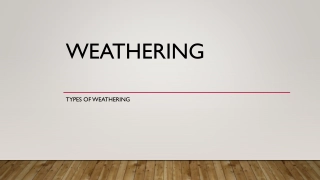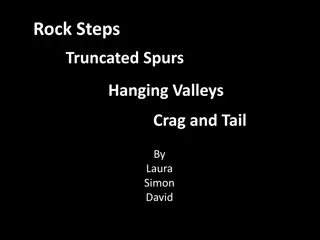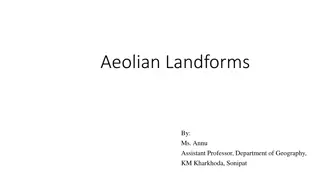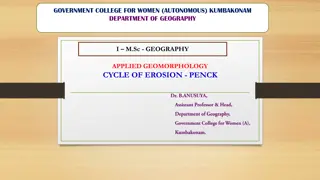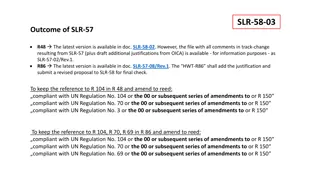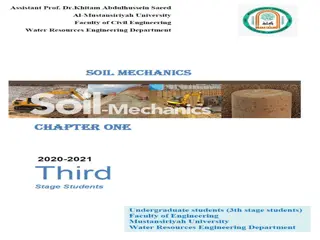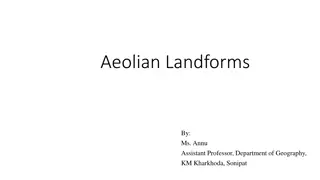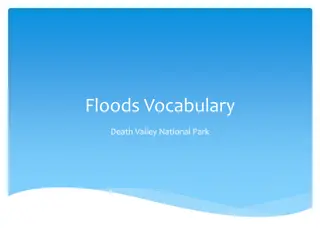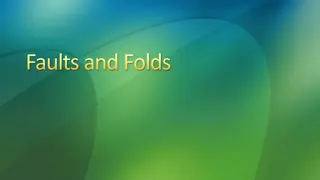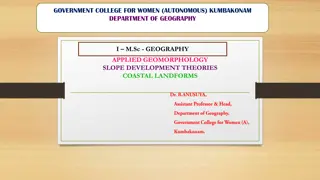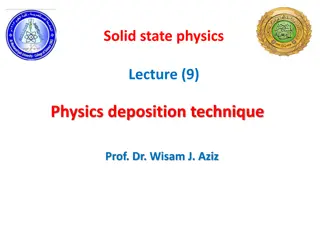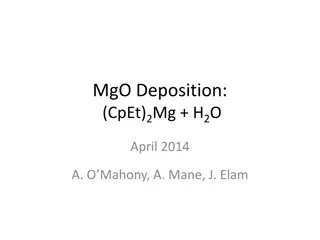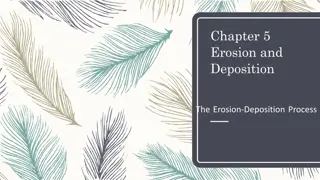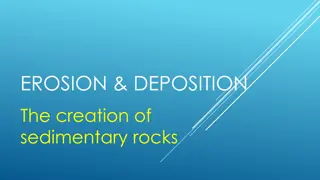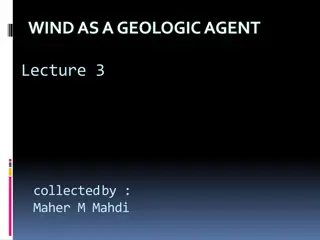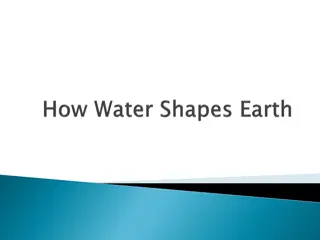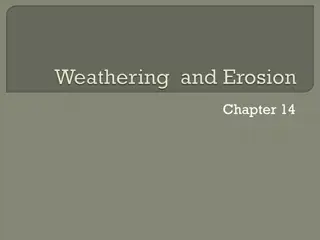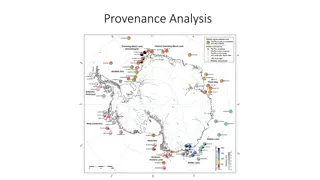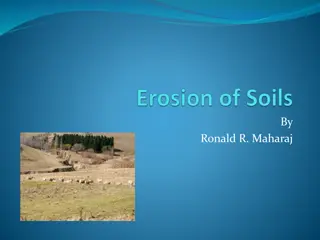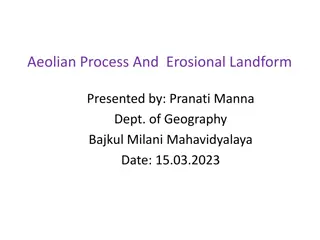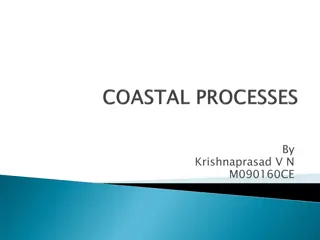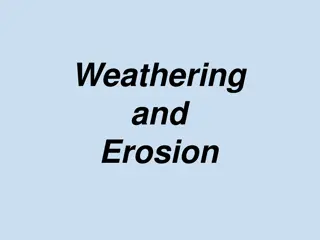Understanding Earth's Landforms: Erosion, Deposition, and Weathering
Explore the processes of erosion, deposition, and weathering that shape Earth's landforms over time. From the breakdown of rock through weathering to the movement of eroded material by erosion and the settling of sediments by deposition, witness the continuous transformation of Earth's surface. Discover how water, wind, ice, and other factors contribute to the creation of mountains, valleys, plains, and other natural formations. Dive into the slow but impactful changes that occur in Earth's shape through constructive and destructive processes.
Download Presentation

Please find below an Image/Link to download the presentation.
The content on the website is provided AS IS for your information and personal use only. It may not be sold, licensed, or shared on other websites without obtaining consent from the author. Download presentation by click this link. If you encounter any issues during the download, it is possible that the publisher has removed the file from their server.
E N D
Presentation Transcript
Erosion & Deposition Chapter 6 p. 174
Weathering Weathering, erosion, and deposition change Earth s landforms (a natural shape of Earth s surface) Landform examples: mountain, valley, plateau, plain, hill, glacier Weathering-processes that change Earth s surface over time can be mechanical or chemical - most common in hot and wet climates Chemical weathering-changes materials that are part of a rock into new materials : dissolves acids or oxidation occurs Wears away the surface of rock, soil, and minerals into smaller pieces Example: small pieces of rock to break off a mountain
Lesson 1 EROSION-DEPOSITION Process Erosion is the removal of weathered material from one location to another Deposition is the laying down or settling of eroded material A combination of constructive & destructive processes produce landforms- continuously change Earth s surface Constructive: build up; Ex: cooled lava forms new land Destructive: tear down; Ex: strong hurricane washes away shoreline
How is Earths shape created? Change is usually so slow that it is difficult to even notice 1) Weathering (destructive) is breaking down rock (physical & chemical changes); caused by wind, water, and ice. Some rocks are more resistant to weathering due to their mineral composition-this creates unusual landforms Pic p. 178 2) Erosion (destructive) is moving away from origination; caused by wind, water, glaciers, and gravity. Occurs at different rates based on weather, climate, topography, and type of rock. Plant life and human life can affect this rate. 3) Deposition (constructive) is relocating sediment to land or water. Layers are typically formed in sediment near water.
Interpreting Landforms Mountains, valleys, plains, sea cliffs, and beaches change slowly Created from erosion: tall jagged structures with cuts in layers of rock Pics p. 182 Created from deposition: flat and low lying like deserts and valleys; can slow down and alter a current in a river Pics p. 183 Analyze Clues from the Canyon p. 185 Activity: Using text & devices, correct a descriptive list of erosion and deposition found near a beach, valley, desert, and mountain top. Record on 4x2 poster.
Lesson 2 Landforms Shape By Water Water can shape land above and below the surface. The speed of flowing water and the amount of deposition can affect landforms. Erosion along streams, rivers, and beaches occurs where water is moving. Fast movement forms v shaped valleys while slow movement forms gentle slopes. Curves or U shape develop with slow movement too. Curves in a stream are referred to as meanders. Pics p. 188 Waves create longshore currents-flows parallel to the shoreline at the beach. This forms abnormal sea cliffs and arches. p. 189 Pic Underground water erodes rock forming caves. Pic p. 189
Water Deposition As water slows down, more sediment settles. It can form a delta-large deposit of sediment that forms where a stream enters a larger body of water. Most of the sand at the beach was originally sediment deposited by rivers. Deposits underground produce stalagmites (floor) and stalactites (ceiling). They both are rock formations formed from deposition and located in caves.
Human Use Practices Damage caused by water erosion can be affected by humans. 1) Beach erosion: People can build retaining walls to trap sediment and decrease erosion from longshore currents Pic p. 191 2) Surface erosion: People can reduce amount of vegetation (plant growth) to increase erosion. Farmers depend on the soil to maintain nutrients and water. Floodplain is a wide, flat area next to a river. Heavy rain can overflow river banks. Building homes here is very risky. Floods produce mineral rich soil ideal for farming. People can build levees to protect their property. Pic p. 191
Wind Erosion & Deposition Strong long lasting winds can also change the shape of the land. As wind blows sediment, rocks are cut and polished. Two common wind blown deposits: 1) Dunes-pile of windblown sand Pic p. 192 2) Loess-crumbly, windblown deposit of silt and clay 3) Sandbars can be built to prevent beach erosion People contribute to wind erosion due to farming/plowing which leaves soil lose for blowing away. Planting in rows and leaving fields unplowed decreases erosion.
Lesson 3 Mass Wasting & Glaciers Mass wasting is the downhill movement of a large mass of rocks or soil due to gravity. Two parts 1) moving downward as a large bulk; 2) gravity is the cause. Occurs when soil on a hillside is saturated with water. Plant roots decrease chances of soil falling apart so many people plant on hills. Landslide: rapid downhill movement of soil, rocks, boulders (rockslide or mudslide). A slump or creep usually occurs first. Creeps are the slowest type of mass wasting. Caused by erosion. Pic p. 197
Glacial Erosion & Deposition Glaciers are large masses of ice that formed on land and moved slowly across Earth s surface-snowfall is greater than snowmelt in these areas. Move centimeters every day-difficult to notice. Can cause erosion & deposition of well-sorted sediment. Alpine glaciers form on mountains and move downward. Ice sheets cover flat land and move outward (only in Antarctica & Greenland today). Erosion occurs when glaciers slide over the land. Graph & Pic p. 199 As glaciers melt, once frozen sediment is deposited as till, moraine, or outwash Pic p. 200
Human Practices Human effects are more significant with glaciers than other forms of erosion and deposition. Glaciers contain of Earth s freshwater. Theory of Global Warming-gradual increase in Earth s average temps can cause increased glacier melts. As glaciers melt, sea levels rise around the world and coastal flooding is possible.
Activity Work in partners to define and determine if the following are examples of erosion or deposition. Arete Cirque- Outwash- Till-
What can you do? Know flood zones Plant vegetation on hills Educate yourself on global warming TEST TIME! Do Review on p. 204-207 Study review (hint hint) Practice Quizlet Make an A! :)


